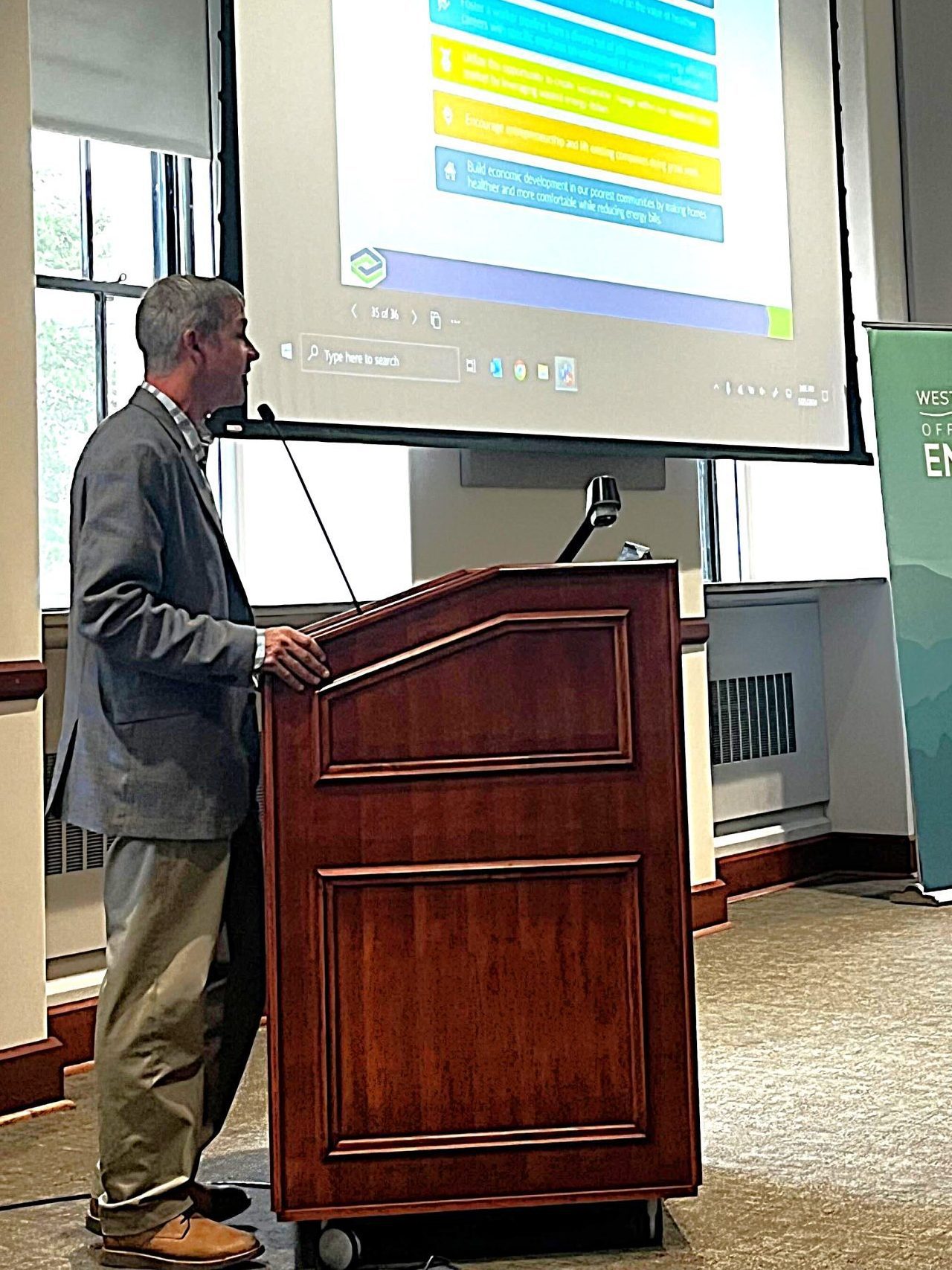Oct 4, 2024
Let’s Go Beyond The Credential
We need energy auditor training that's focused on customer expectation setting, project management, and building science education.
By: Xavier Walter

I’ve taken my Building Performance Institute (BPI) Building Analyst written and field exams several times, and I honestly believe that everything covered in them is necessary to ensure a base knowledge of health, safety, and efficiency.
But what’s missing—and what I’m proposing—is something a little different: auditor training focused on customer expectation setting, project management, and customer education on the work being done and the building science behind it.
BPI governs industry standards development and testing, but they don’t offer training or curriculum. Like we saw several years ago during the American Recovery and Reinvestment Act (ARRA), many institutions across the Nation popped up as BPI Test Centers and used curriculum from many different places. Between then and now, very little has changed, and most trainers still offer the same content designed to pass an exam. While that’s valuable, I think we’re missing the final piece: preparing energy auditors with the skills necessary to be successful in their customer’s homes.
Types of Energy Auditors
The way I see it, there are essentially three different kinds of energy auditors in the marketplace today:
- Those who work for a low-income weatherization agency focused on savings-to-investment ratios,
- Those who work for utility rebate programs and spend their time working within contracts and proposed energy efficiency measures, and
- Those who are true free-market auditors, pounding the streets and running Facebook ads to find willing homeowners looking to reduce their energy costs and save the planet.
All of these roles have similar activities, but a primary difference between weatherization auditors and utility program auditors is the customer. Customers using weatherization programs are often income-eligible and therefore not paying out of pocket. The utility program customer, on the other hand, may need to spend their own money and may even get a loan for the work. Both situations require adherence to a litany of paperwork and rules to satisfy an annual file review, or to meet basic program requirements. In the case of the free-market auditor, there is a lot more flexibility in behaviors driven more towards making the case for energy efficiency improvements.
A Little Background
Many years ago, Linda Wiggington (one of the founders of the Affordable Comfort Institute, a preceding organization to the Building Performance Association) understood that there was a communication breakdown between income-eligible weatherization workers and the customers in which they serve. Armed with that knowledge, she began teaching basic communication and humanity skills that helped shaped much of the compassion we see in weatherization programs today.
Additional classes focused on customer expectation setting, building science education, and actual explanations of what the work entails may help in perfecting the auditor’s approach while staving off possible customer complaints and confusion.
I was really fortunate to start my career in one of the first Home Performance with Energy Star programs administered by Conservation Services Group (CSG). The people there (you know who you are) really went out of their way to teach me and my staff how to best navigate the program, follow the rules, and understand the impacts of our work.
We had to teach ourselves how to align the total cost of the project, with the rebates that took 60 days to get back, and financing that wouldn’t pay out until the job was completed. It was quite the dance with a homeowner when we would give them a 90-day 0% credit card for rebates, and just pray that the job didn’t get selected for quality control, which would result in a significant delay in finance payout. All of this is something a good auditor needs to learn to navigate.
Luckily, now there are contractor bridge loan products from companies like the National Energy Improvement Fund and others that can help contractors stay working without worrying about accounts receivable. Participating stakeholders in the HOMES program under the Inflation Reduction Act (IRA) have been promoting a measured approach where deep-pocket aggregators are willing to accept the financial risk and promise to pay out quickly. Unfortunately, none of these business cases are covered in current credential trainings, nor are there any classes to help auditors understand the financial aspects of the “sale” to the homeowner.
The Challenge
Priority measures and creating a project that will be most impactful for the least amount of effort and cost can vary from project to project. Auditors are expected to use the knowledge they have of what “uses or loses the most” energy to determine what measures are most important, and those that are farther down the list. This is often hard to quantify without knowing the actual cost of labor and materials. Job timing, subcontractors, and homeowner desires can all impact this priority list. As the world moves towards electrification, either forced or beneficial, it becomes even more important that the auditor understands the impacts of what they are recommending. It could be catastrophic for a homeowner to receive a heat pump water heater replacement of a gas unit in cost; same could be said to go from a high efficiency gas furnace to lower efficiency heat pump. Let’s not forget that most of these heat pump products have some sort of resistance backup that can send the electric meter spinning out of control. BPI has recently released the new Total Building Performance (TBP) certificate that covers much of this information and several BPI Test Centers anticipate offering online, module-based classes in the near future.
Historically, there has been an aversion to energy auditors being financially compensated from the measures in which they recommend. While I understand this may appear that it could be the fox in the hen house, I honestly think the vast majority of certified assessors are the best possible salespeople and project managers. Going into a home under the whole-house approach and devising a work scope that will yield the best possible outcomes is really what drives most auditors.
The reality is that there’s only a canned list of measures to pull from almost every time. The average deep energy retrofit consists of crawlspace or basement remediation, attic air sealing and insulation, and HVAC and water heating upgrades. The vast majority of the cost is in the actual HVAC upgrade, with air sealing and insulation often running second in cost and comparable to a heat pump water heater. The work in a basement or crawlspace can vary widely depending on the existing conditions and the proposed method for remediation. An 8-mil vapor barrier will almost block the same amount of moisture as a 40-mil vapor barrier; it’s just a matter of what the company and customer prefer. Having an auditor understand these differences and their project implications as they relate to the business model can be an important factor when talking about profit, project success, and business sustainability.

The Proposed Solution
A good auditor should shadow an HVAC salesperson to ensure what they propose can actually be done, and what variances may need to be made for a project to go smoothly. Sizing, space constraints, and equipment selection are all valuable skills for an energy auditor, especially if they are acting in a sales capacity. Heat pump water heaters are significantly taller than your average electric water tank and may not fit in a low basement. The little hatch going into the crawlspace where the air handler sits may not be big enough to fit a newer larger unit. Especially when we consider electrification, there may be the need for upgrade wiring and electrical boxes. None of these factors are considered during your typical training classes offered nationwide. Proper diagnosis and commissioning of HVAC equipment could be some great next-level business models, and would provide a pathway for seasoned auditors to play a role in quality installation of equipment.
Moving into the next few years with government dollars pouring into homes, it is imperative that we support and cultivate professionals to move beyond the ability to pass an exam. We need to condense years of experience and hundreds of various retrofit scenarios into the minds of energy auditors today. While YouTube videos and Facebook groups are a great place for education and information, it is far better to insert this whole-house approach directly into a variety of trainings happening today. Ultimately, many of these atmospherically vented combustion appliances will be a thing of the past. Technology moves fast and energy auditors need to be up to speed.






